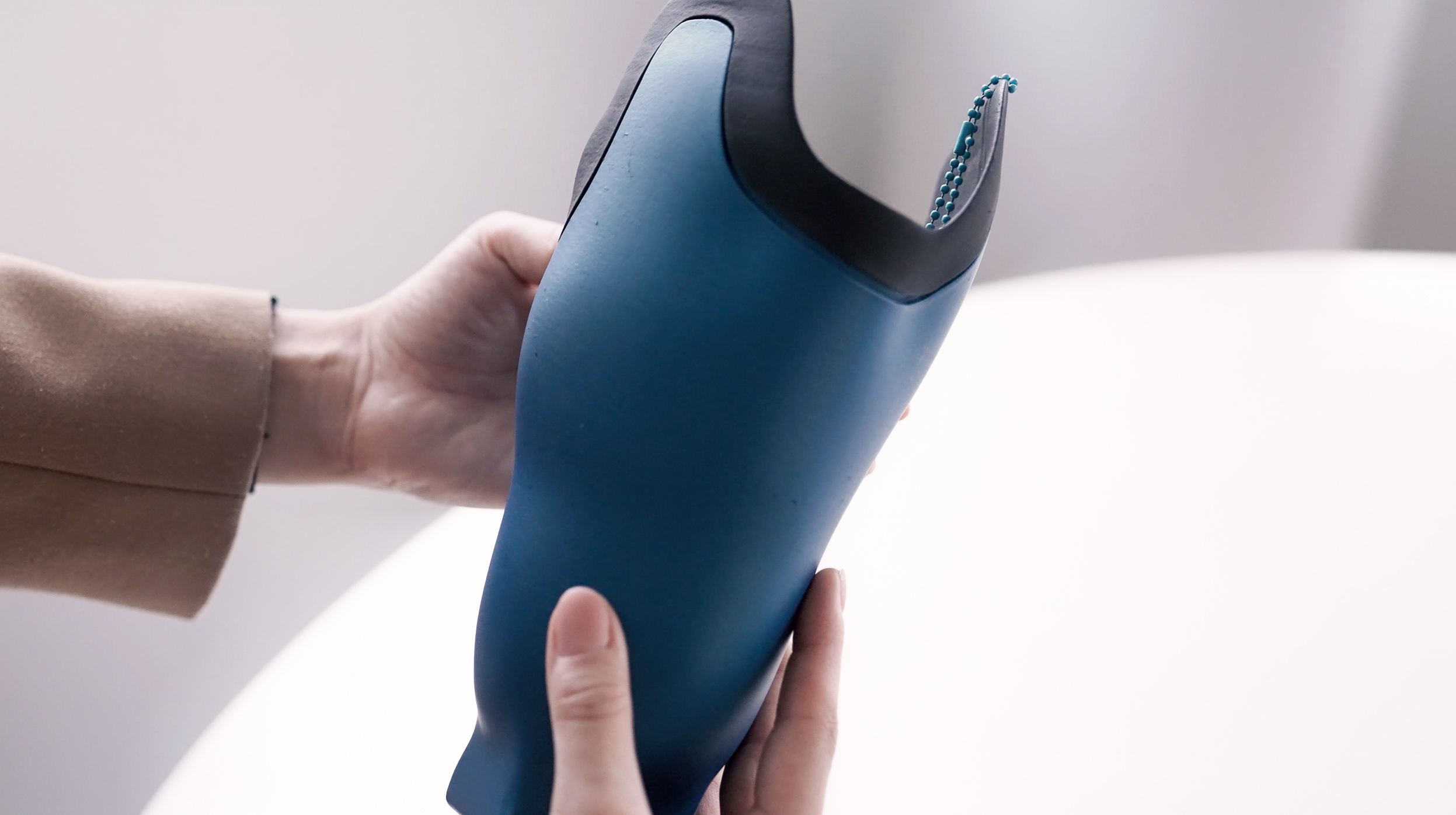Knee brace overview

A knee brace is an external medical device designed to help relieve or prevent pain by reducing stress on the knees, joints and muscles. It has also been shown to decrease swelling and inflammation, improve balance, support weak ligaments or tendons, aid in recovery after injury and provide support for people who are recovering from surgery.
There are several types of knee braces, depending on the user’s condition and treatment plan. Some are preventive, used by athletes to avoid injuries during intense physical activity. Others are corrective, supporting the joint while healing or compensating for a structural weakness.
With new technologies like 3D printers, the main goal to improve mobility, reduce discomfort and enhance movement. Digital tools from 3D scanning to 3D printing gives CPOs the best solutions to their patients.
Introduction to 3D printed knee braces
In recent years, 3D printers have become a powerful tool in many medical fields, especially orthopedics. It allows CPOs to create custom-made devices that match each person’s unique anatomy. This innovation brings a major shift in how knee braces are designed, produced and delivered.
The process starts with a 3D scan of the person’s leg. This scan captures accurate measurements and provides a detailed model of the knee area. It ensures that the next steps can be done seamlessly for a perfect fitted device.
Next, the 3D scan is imported into a CAD (computer-aided design) software like Fitflow Cube or Canfit. Here, the practitioners can modify the shape, add reinforcement, adjust thickness etc. The design step allows complete control and flexibility to adapt the device to both medical needs and individual’s comfort.
Once the digital model is ready, it can be sent to a 3D printer. This method not only ensures precision but also significantly reduces production time.
The result is a device that is lightweight, functional and tailored to the patient’s anatomy which is a perfect example of how digital tools can improve orthopedic care.
3D printing a knee brace
The main advantages of using 3D printers are preventing waste and offering the most efficient brace for a person. CPOs can design the device with dedicated software and then send their files to their 3D printer to print the brace.
The solution can also include differentiated zones: some parts may be more flexible to allow movement, while others are reinforced to stabilize the joint. This kind of structure improves both efficiency and comfort, offering targeted support where it’s needed most.
In short, a 3D printed knee brace is not just a tool, it’s a customized solution, built to help individuals recover or move better with precision.
Benefits of using 3D printing
One of the biggest advantages of 3D printers are the accuracy.
Thanks to a global digital workflow, CPOs can create a brace easily. Starting with a 3D scan of the leg, practitioners will be able to obtain an accurate 3D file reflecting the individual’s shape. This will enable the next steps of the process, for a better accuracy and, in the end, greater comfort, fewer pressure points and better support during movement. For many patients, this makes a big difference in their daily use of the device.
Another benefit is reduced production time. Traditional method requires manual fabrication, which can take a lot of time. With a complete digital process, once the scan and design are completed, the brace can be 3D printed and delivered much faster, accelerating the entire care process.
Customization is another key strength. Patients can choose colors, finishes and even the general appearance of the brace. This may seem like a detail, but it can play a major role in improving patient acceptance, especially among younger users or those who wear the brace daily.
Finally, from an environmental and logistical point of view, 3D printed braces reduce material waste. While the traditional method makes a lot of shavings that are clearly visible, tangible and excessive, digital process and 3D printing reduce considerably the material waste making it cleaner, with precise filament lines and minimal scraps.
3D printers mark a new era in orthopedic care. It combines precision, speed, comfort and personalization which are important benefits in modern healthcare. While traditional braces continue to serve their purpose, the advantages offered by 3D printing technologies make them a strong alternative, especially when patient care is a priority.
As tools like 3D scanning, design software and manufacturing methods become more accessible, it’s likely that more practitioners will turn to these innovative solutions. At Qwadra, we believe that these technologies represent the future of orthopedic treatment: faster, smarter and closer to each individual’s needs.
Read also :